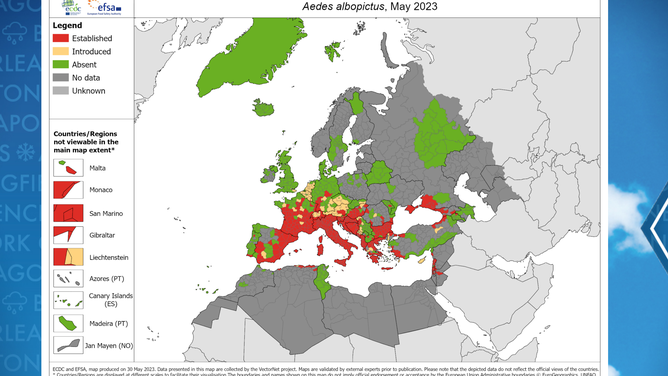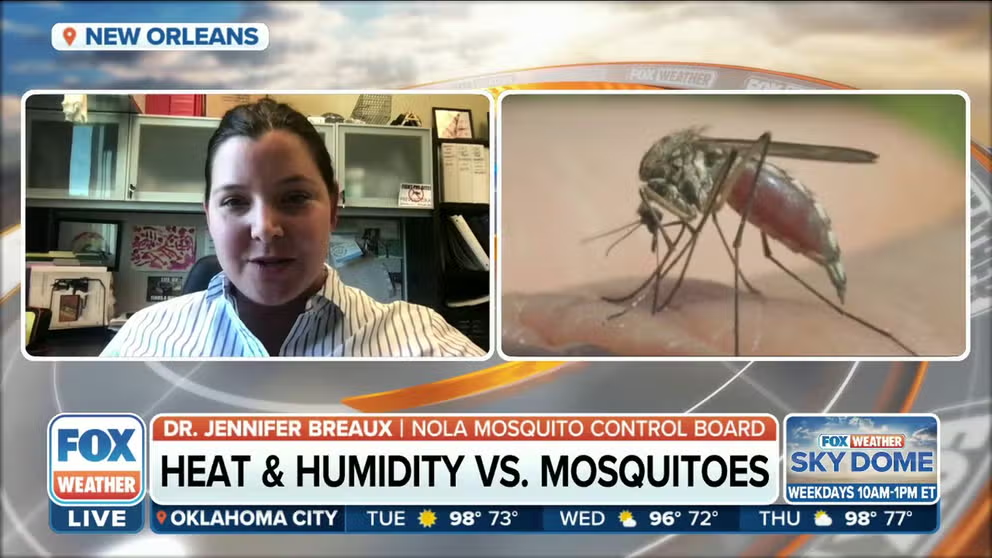Risk of mosquito-borne diseases including West Nile virus increasing across Europe, health officials warn
The center reports in 2013, the Aedes albopictus mosquito was in 8 European countries, with 114 regions affected. Now, the mosquito is thought to be established in 13 countries and 337 regions.
Impacts heat and humidity can have on mosquitoes
Dr. Jennifer Breaux of the NOLA Mosquito Control Board joined FOX Weather Sky Dome to discuss West Nile Virus and mosquitoes.
SOLNA, Sweden – Officials at the European Center for Disease Prevention and Control warn that a warming climate, which includes frequent flooding and heat waves, is leading to the expansion of mosquitoes that can spread viruses.
Health experts are paying particular attention to the Aedes aegypti and Aedes albopictus species known to transmit dengue, yellow fever, chikungunya, zika and West Nile viruses.
The ECDC reports ten years ago, the Aedes albopictus mosquito was only established in eight European countries but is now thought to be in at least 13.
WHAT CITY TOPS THE LIST FOR MOSQUITOES?
"In recent years, we have seen a geographical spread of invasive mosquito species to previously unaffected areas in the EU/EEA" Andrea Ammon, a director at the ECDC, said in a statement. "If this continues, we can expect to see more cases and possibly deaths from diseases such as dengue, chikungunya and West Nile fever. Efforts need to focus on ways to control mosquito populations, enhancing surveillance and enforcing personal protective measures."
Viruses spread by mosquitoes can lead to illness and even death, and health officials say they have seen cases continue to peak in the human population.

Reports of the mosquito species Aedes albopictus in 2023
(European Center for Disease Prevention and Control / FOX Weather)
In 2022, 1,133 cases and 92 deaths from the West Nile virus were reported across the continent, with many locally acquired cases.
Aside from mosquito population controls, personal protective measures and public awareness, officials warn that little can be done to slow the spread of the species.
The spread is not only an issue for Europe; every continent except Antarctica can support the blood-sucking insect.
NEW INVASIVE MOSQUITO SPECIES SPREADING IN FLORIDA
NOAA reports in the United States the West Nile virus typically occurs between July and October, with an average of 1,100 cases reported annually.
Symptoms typically include headaches, malaise, fever, vomiting, rashes, fatigue and even eye pain.
No specific treatment exists against the disease in humans, but health experts estimate 80% of patients are asymptomatic.
2022 is warmest year on record for parts of Europe
Records fell in Europe in 2022. Great Britain, France, Spain and Switzerland all experienced their warmest year since record-keeping began.

